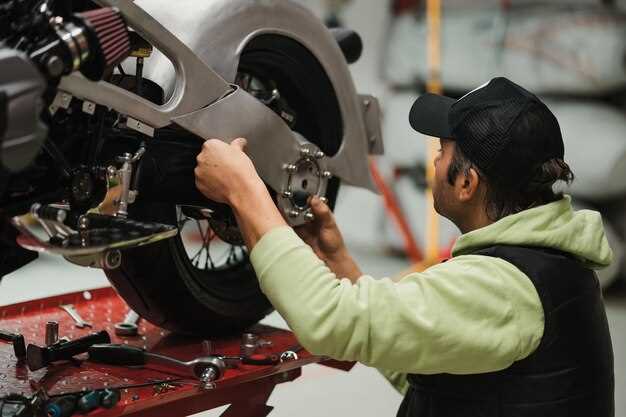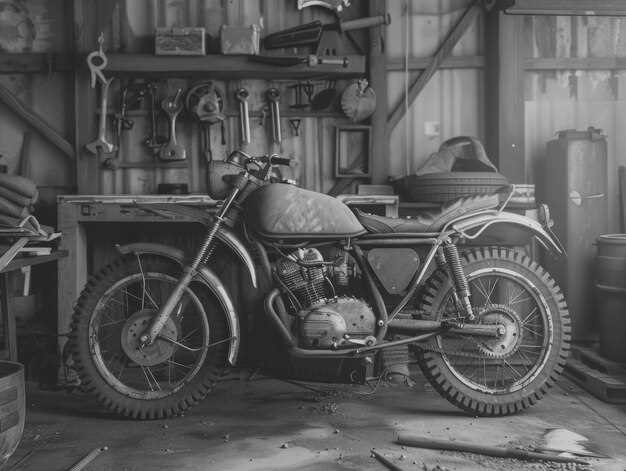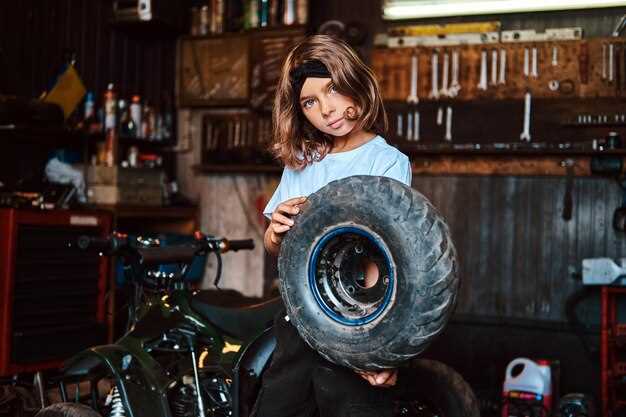

Building a custom motorcycle is a rewarding venture that allows enthusiasts to combine their passion for two wheels with technical skills and creativity. The process, while complex, can be broken down into manageable steps, enabling anyone with determination and the right tools to create a unique machine tailored to their personal preferences.
Before starting the project, it’s essential to outline your vision. Consider factors such as the style of motorcycle you want to build, the type of riding you plan to do, and your budget. Researching different motorcycle types–such as choppers, cruisers, or cafe racers–will help clarify your goals and guide your design choices.
With a clear concept in mind, the next step is to gather the necessary tools and materials. A well-equipped workshop is crucial for a successful build. You will need various tools, including wrenches, sockets, a welding machine, and electrical equipment. Additionally, sourcing the right parts, whether new or salvaged, plays a significant role in achieving the desired look and performance of your custom motorcycle.
As the project progresses, attention to detail will be vital. From frame construction to engine assembly and finishing touches, every stage requires careful planning and execution. Understanding the mechanical and aesthetic aspects of motorcycle building will not only enhance the quality of your work but also deepen your appreciation for this intricate craftsmanship.
Selecting the Right Frame and Components for Your Build
Choosing the correct frame is crucial to the success of your custom motorcycle project. The frame serves as the backbone, influencing not only the bike’s aesthetics but also its handling, performance, and overall safety. Start by determining the type of motorcycle you wish to build–whether it’s a cruiser, sportbike, or chopper–as frame geometry varies significantly across these categories.
When selecting a frame, consider materials. Steel frames are robust and provide good flexibility, making them suitable for various customizations. On the other hand, aluminum frames are lighter and offer better handling but may be less forgiving in terms of modifications. For a balance of durability and weight, some builders opt for high-strength steel alloys.
Next, think about frame style. A rigid frame is simple and offers a classic look but provides less comfort due to its lack of suspension. In contrast, a frame with a built-in suspension system enhances ride quality. Your choice should align with the intended use of the motorcycle–long-distance touring may require a more comfortable, suspension-equipped frame, while a minimalist, aesthetic-focused project may benefit from a rigid design.
After selecting the frame, focus on components that complement your design. The engine is one of the most critical components, influencing performance. Consider engine size, power output, and compatibility with your frame. Ensure that the mounting points match and that sufficient space exists for proper cooling and maintenance access.
Suspension components are another key area. The selection of front forks and rear shocks affects handling and ride quality. Look for options that can adjust preload and damping, providing you with the flexibility to optimize performance based on weight and riding style.
Wheels and tires also play a vital role in both aesthetics and functionality. Ensure that the wheel size is compatible with your frame and suspension setup. Wider tires can improve grip but may require specific wheel widths and may affect handling characteristics. Additionally, consider brake systems; whether you choose disc or drum brakes, ensure they are appropriate for the intended performance and weight distribution of your motorcycle.
Finally, don’t overlook electrical and ergonomic components. Choose a quality wiring harness that meets your needs, and consider the placement of your controls for comfort and accessibility. Handlebars should match your riding style and frame height to provide optimal control and comfort.
In summary, selecting the right frame and components is a balancing act between performance, aesthetics, and functionality. Invest time in research and experimentation to create a motorcycle that not only looks great but also rides perfectly to suit your needs.
Designing the Aesthetic and Functional Aspects of Your Motorcycle

When creating a custom motorcycle, the balance between aesthetics and functionality is crucial. Start by defining the overall theme or style you wish to achieve, whether it be classic, modern, or a fusion of elements. This will guide your design decisions throughout the build process.
Next, consider the frame design. The frame not only influences the visual appeal but also affects the motorcycle’s handling characteristics. A rigid setup may enhance stability and reduce weight, while a more flexible frame could improve rider comfort. Choose materials that complement your aesthetic while ensuring structural integrity, such as steel for classic looks or aluminum for a sleek, modern vibe.
The choice of bodywork is another significant aspect. Fairings, fenders, and gas tanks come in various shapes and finishes that can dramatically transform the motorcycle’s appearance. Select components that fit your desired style, and ensure they are crafted from durable materials to withstand the rigors of the road.
Paint and finishes play a pivotal role in the motorcycle’s aesthetic. Opt for a color scheme that reflects your personality, and consider using techniques like airbrushing or metallic finishes for unique visual effects. Don’t forget about the practicalities; use high-quality clear coats to protect the paint from the elements and wear.
When it comes to ergonomics, the seating arrangement affects both the look and feel of the ride. Choose a seat that complements the design while offering comfort for long rides. Handlebar height and position should also align with rider preferences, enhancing control without sacrificing style.
Finally, pay attention to the small details, such as lighting and instrument clusters. Custom LED indicators and gauges can elevate the bike’s aesthetic while providing functionality. Ensure all elements are cohesive, creating a motorcycle that is not only visually stunning but also delivers an exceptional riding experience.
Assembling, Testing, and Fine-Tuning Your Custom Motorcycle

Once you have all the components ready, it’s time to begin the assembly of your custom motorcycle. Start by organizing your workspace to ensure easy access to tools and parts. Lay out your frame and attach the engine securely, ensuring that all mounting points are aligned. Utilize the appropriate torque specifications for your engine bolts to prevent any unforeseen issues.
After the engine is installed, move on to attaching the transmission and primary drive components. Make sure all parts fit snugly without excessive force. Next, connect the electrical wiring according to the schematic you prepared earlier, ensuring each connection is clean and protected from potential wear.
Once the core components are assembled, including the wheels, brakes, and suspension, perform a thorough inspection. Check that all fasteners are tightly secured and that there are no loose components. Fill the fluids, including oil and coolant, before proceeding to the next step.
Before hitting the road, conduct a series of stationary tests. Start with the electrical system, ensuring that lights, signals, and instruments function properly. Check the brakes for responsiveness and inspect for any leaks around the fuel and hydraulic systems.
When you’re confident that everything is in order, take the motorcycle outside for an initial test ride. Choose a safe, quiet area to assess the handling, braking, and acceleration. Pay close attention to any unusual noises or vibrations, which could indicate misalignment or improper installation. It’s essential to gradually increase your speed to familiarize yourself with the bike’s behavior.
After the first ride, evaluate its performance critically. Check the alignment of the wheels, the braking efficiency, and the overall comfort of the ride. This is the stage where fine-tuning becomes crucial. Adjust the suspension settings if necessary to improve handling, and tweak the carburetor or fuel injection system for optimal performance.
Incorporate feedback from the test rides into your adjustments. You may need to alter the throttle response, adjust brake sensitivity, or improve seating ergonomics. Keep meticulous records of each adjustment you make and the results observed to refine the bike further.
Lastly, continue testing and refining over a few rides to ensure reliability and comfort. Regular maintenance checks will help keep your custom motorcycle in peak condition, allowing you to enjoy your creation for many miles to come.






